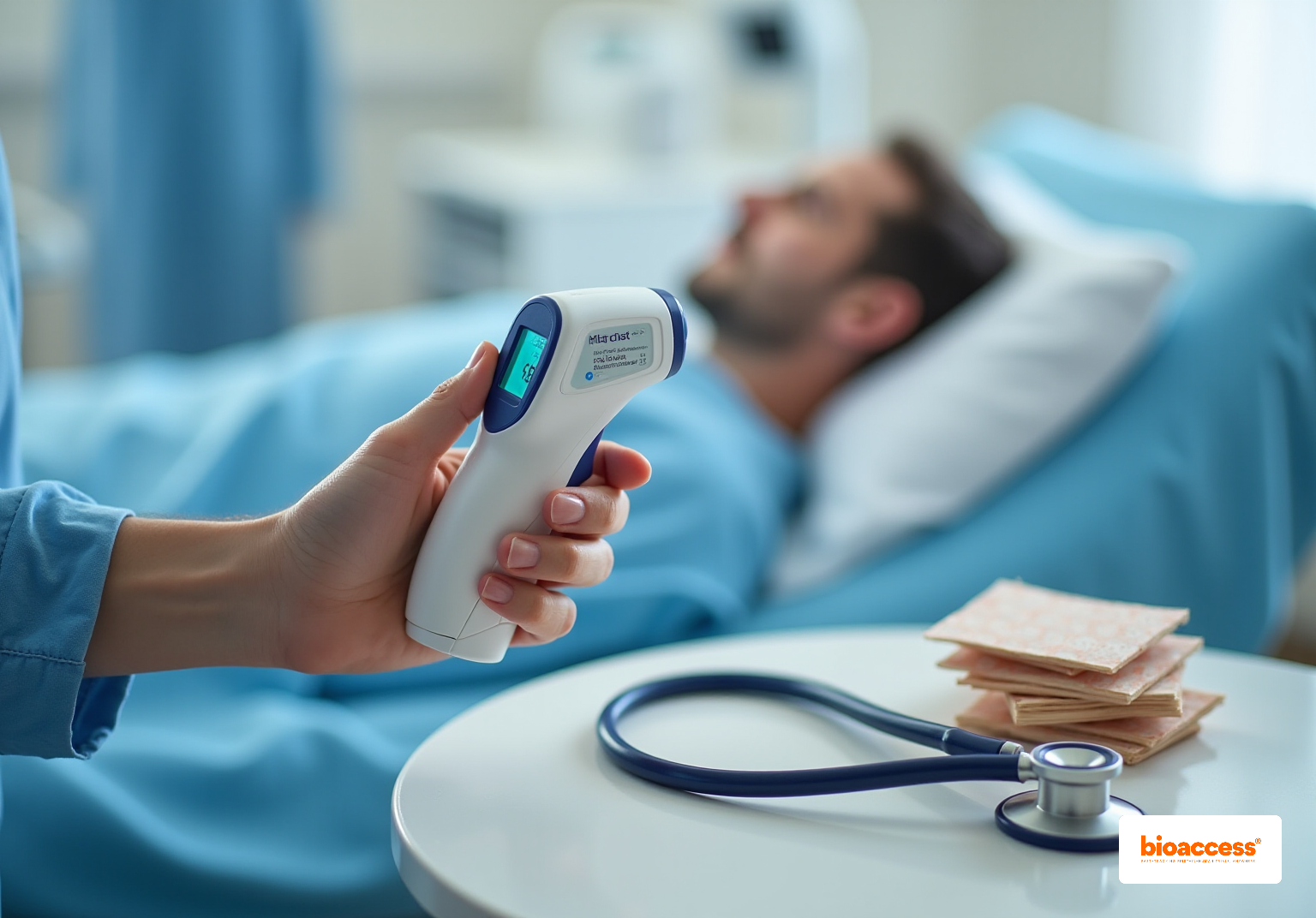


The article titled "10 Class 1 Medical Device Examples You Should Know" serves to identify and elucidate various examples of Class 1 medical devices, underscoring their critical significance within healthcare settings. It details their functions, market potential, and the pivotal role they play in enhancing patient care and safety. Specific examples, such as:
are highlighted to illustrate their importance effectively.
Class 1 medical devices are integral to everyday healthcare, often overlooked yet vital for ensuring patient safety and effective treatment. This article explores ten significant examples of these devices, ranging from the common adhesive bandage to the life-saving manual resuscitator, underscoring their importance and applications across various medical settings.
As the healthcare landscape continues to evolve, it is essential to understand the impact and innovations surrounding these devices. This raises a critical question: how can advancements in Class 1 medical devices further enhance patient care and safety in an increasingly complex medical environment?
bioaccess® excels in accelerating the development of products that are class 1 medical device examples by leveraging the regulatory flexibility of Latin America. With ethical approvals secured in an impressive 4-6 weeks and enrollment processes that are 50% faster than traditional markets, bioaccess® provides Medtech, Biopharma, and Radiopharma innovators with a significant competitive advantage. The organization has successfully finalized over 159 regulatory submissions for more than 75 medical equipment trials, showcasing its expertise in navigating the intricate regulatory landscape. This efficiency not only accelerates market entry but also allows clients to leverage the diverse patient pools available in the region, ultimately enhancing their potential for success in the rapidly evolving healthcare environment.
As the Latin American market is projected to grow at a CAGR of 13.93% from 2025 to 2033, bioaccess® remains a pivotal partner for companies aiming to capitalize on this burgeoning opportunity. By collaborating with bioaccess®, organizations can effectively address the key challenges in clinical research and position themselves strategically for future growth.
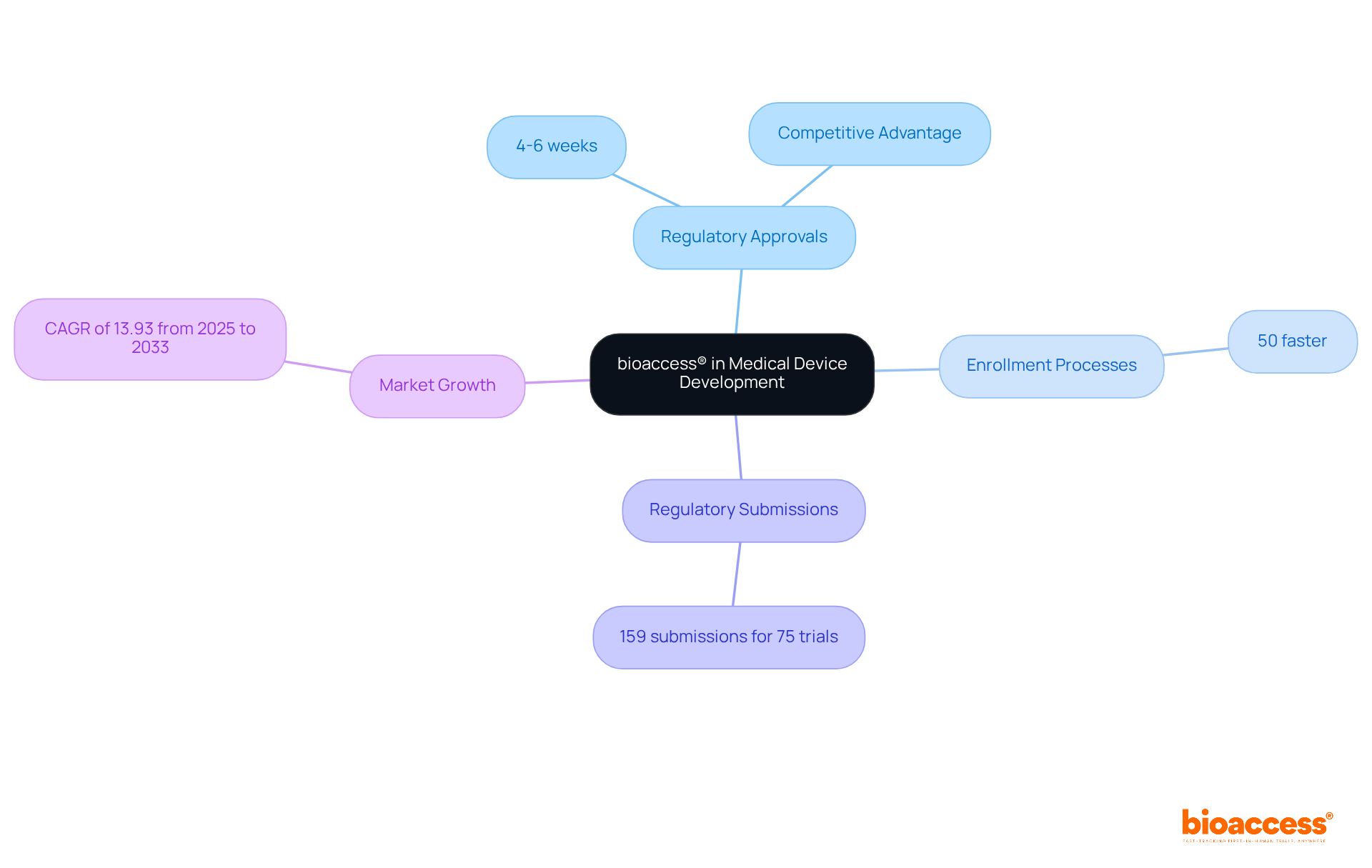
Adhesive bandages serve as a class 1 medical device example, essential for protecting minor cuts and abrasions. These tools are designed to adhere to the skin, providing a barrier against dirt and bacteria while facilitating the healing process. Their simplicity and effectiveness render them indispensable in both home and clinical settings, underscoring the critical role of a class 1 medical device example in everyday medical care.
The global adhesive bandages market is projected to reach approximately USD 8.35 billion by 2025, with expectations to grow to USD 11.38 billion by 2034. This growth reflects an increasing demand driven by heightened awareness of wound care and a rising incidence of injuries. Healthcare professionals consistently affirm the efficacy of adhesive bandages, highlighting their ability to mitigate infection risks and promote quicker healing. Kesiya Chacko emphasizes, "These outpatient centers need to have good wound care, and adhesive bandages are needed after small operations." Furthermore, studies indicate that surgical wound protectors can reduce the risk of surgical infections by as much as 45%, illustrating the importance of effective wound management solutions.
The application of adhesive bandages is prevalent across various medical environments. In hospitals, they are routinely employed post-surgery to secure incisions and prevent contamination. Additionally, outpatient centers depend on adhesive bandages for wound care following minor procedures, showcasing their versatility and vital role in patient recovery. As the medical landscape continues to evolve, the ongoing innovation and adaptation of adhesive bandages will further enhance their impact on health outcomes.
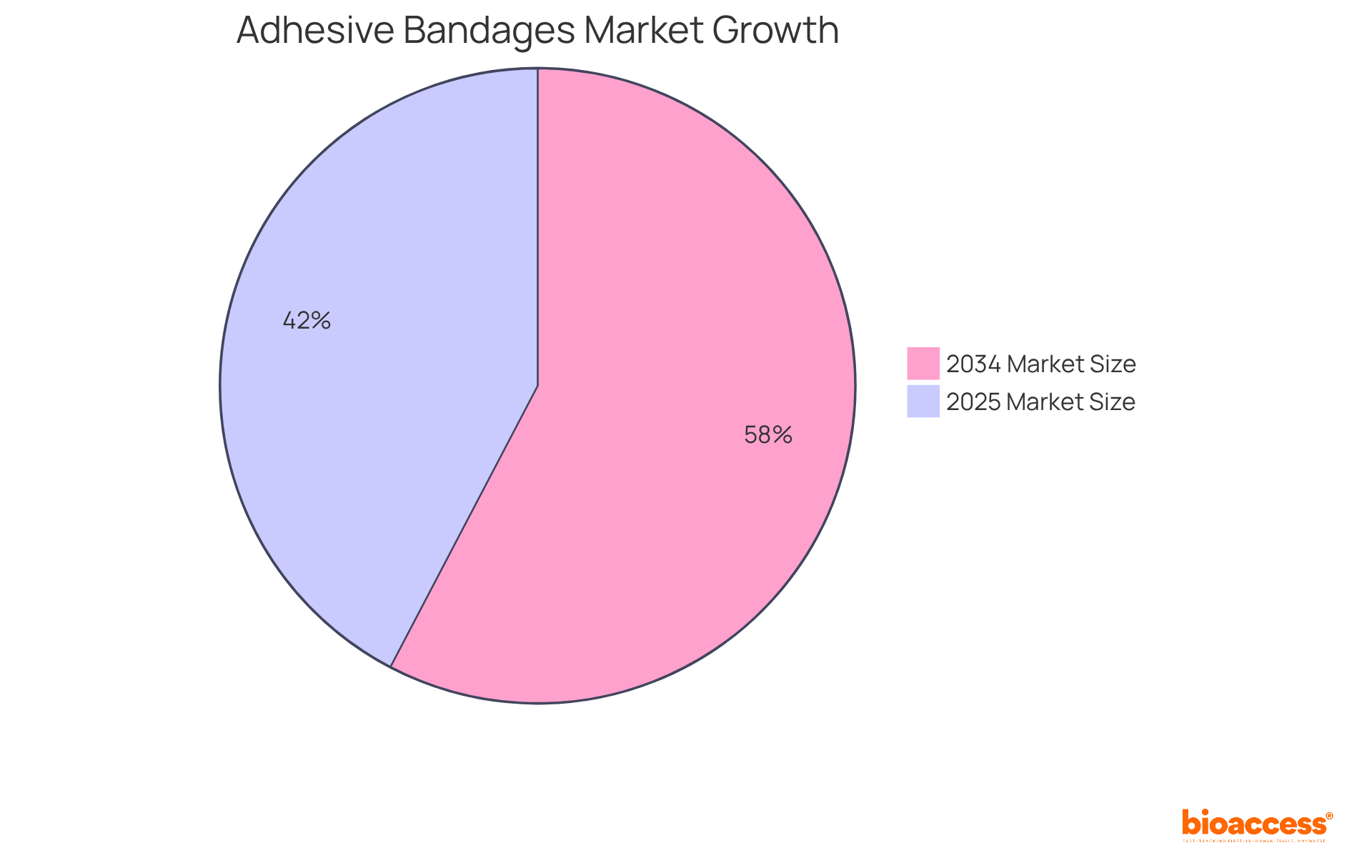
Digital thermometers are a prime class 1 medical device example that provide rapid and precise measurements of body temperature, making them essential in both clinical and home healthcare settings. Their role in effective health monitoring cannot be overstated, particularly as the demand for accurate and timely temperature readings escalates. Recent advancements in digital thermometer technology have introduced features such as memory recall and fever alerts, significantly enhancing their functionality in healthcare.
For instance, modern digital thermometers can resolve temperature differences as small as 0.1°C, ensuring high accuracy that surpasses traditional mercury-based thermometers. This level of precision is critical in clinical settings, where accurate temperature measurements are vital for diagnosing infections and overseeing patient care.
Experts in the field underscore that the incorporation of smart technology in digital thermometers, including Bluetooth connectivity for real-time data transmission, is revolutionizing individual monitoring. As the medical field continues to evolve, the importance of digital thermometers in facilitating proactive health management and improving patient outcomes remains paramount.
Moreover, the global digital thermometer market was assessed at USD 1.06 billion in 2024 and is projected to reach USD 1.59 billion by 2030, reflecting the growing significance of these instruments. Additionally, with 21.6% of the EU population aged 65 or older as of December 2024, the necessity for effective health monitoring tools like digital thermometers is more critical than ever. However, challenges such as limited awareness in rural areas may impede their widespread adoption.

The stethoscope serves as a class 1 medical device example, being indispensable for healthcare professionals engaged in auscultating internal body sounds, such as heartbeats and lung sounds. Its innovative design amplifies these sounds, thereby facilitating the accurate diagnosis of a wide array of medical conditions. The ongoing significance of the stethoscope in clinical environments highlights its role as a class 1 medical device example in evaluations and care.
As we approach 2025, traditional acoustic stethoscopes are projected to retain a substantial market share, accounting for approximately 72.61% of the U.S. stethoscope market, attributed to their affordability and reliability. Moreover, advancements like AI integration and Bluetooth technology are transforming stethoscope functionality, enhancing diagnostic capabilities and enabling remote patient monitoring. This evolution highlights the stethoscope's essential role in contemporary medical practice, where precise diagnostics are crucial for effective treatment.
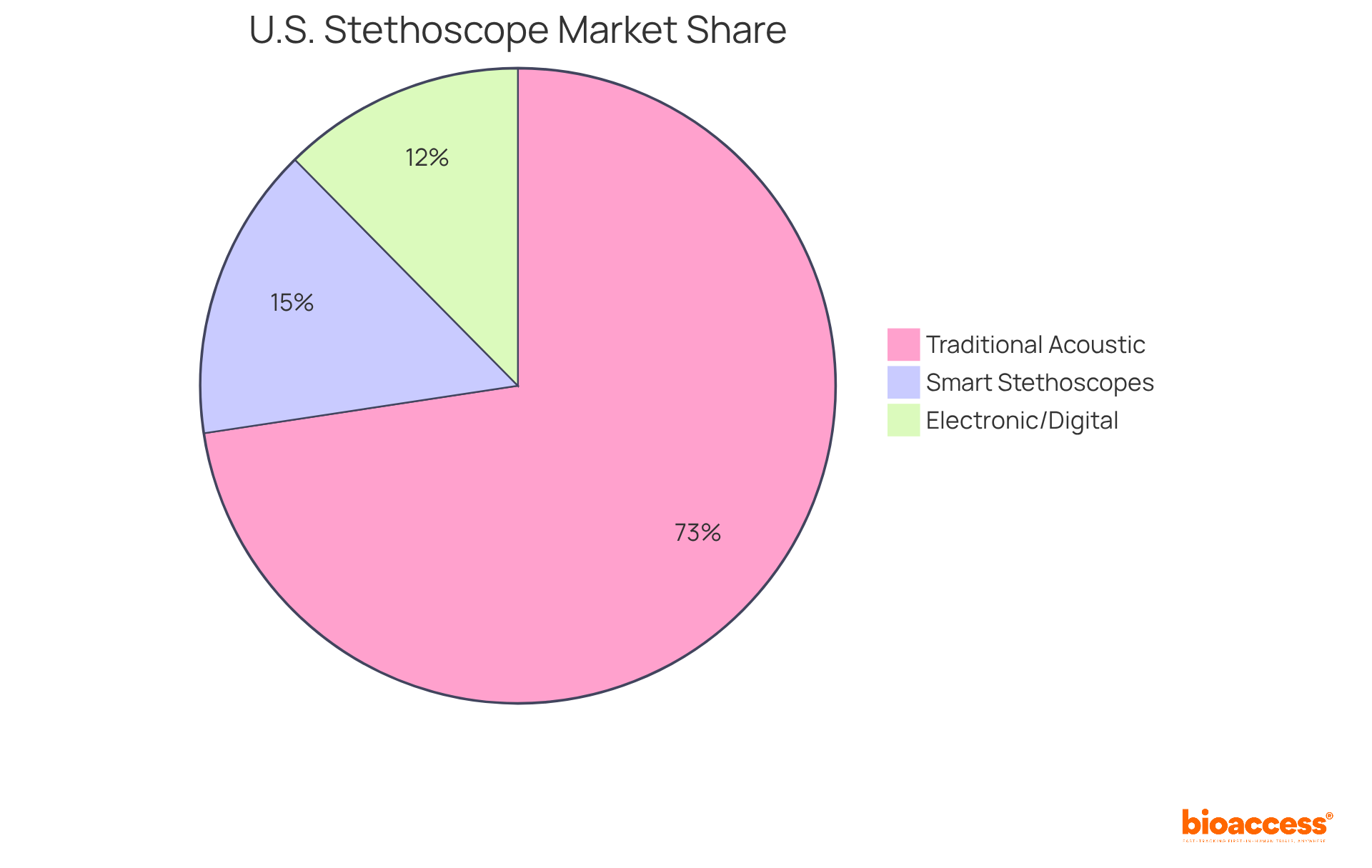
Elastic bandages are a versatile class 1 medical device example, widely recognized for their ability to provide essential support and compression for injuries such as sprains and strains. Their inherent stretchability allows them to adapt seamlessly to various body parts, effectively stabilizing injuries and mitigating swelling. These bandages are not merely accessories; they are vital components of first aid kits, routinely employed in both home environments and clinical settings. Understanding their significance can enhance preparedness and response in injury situations.
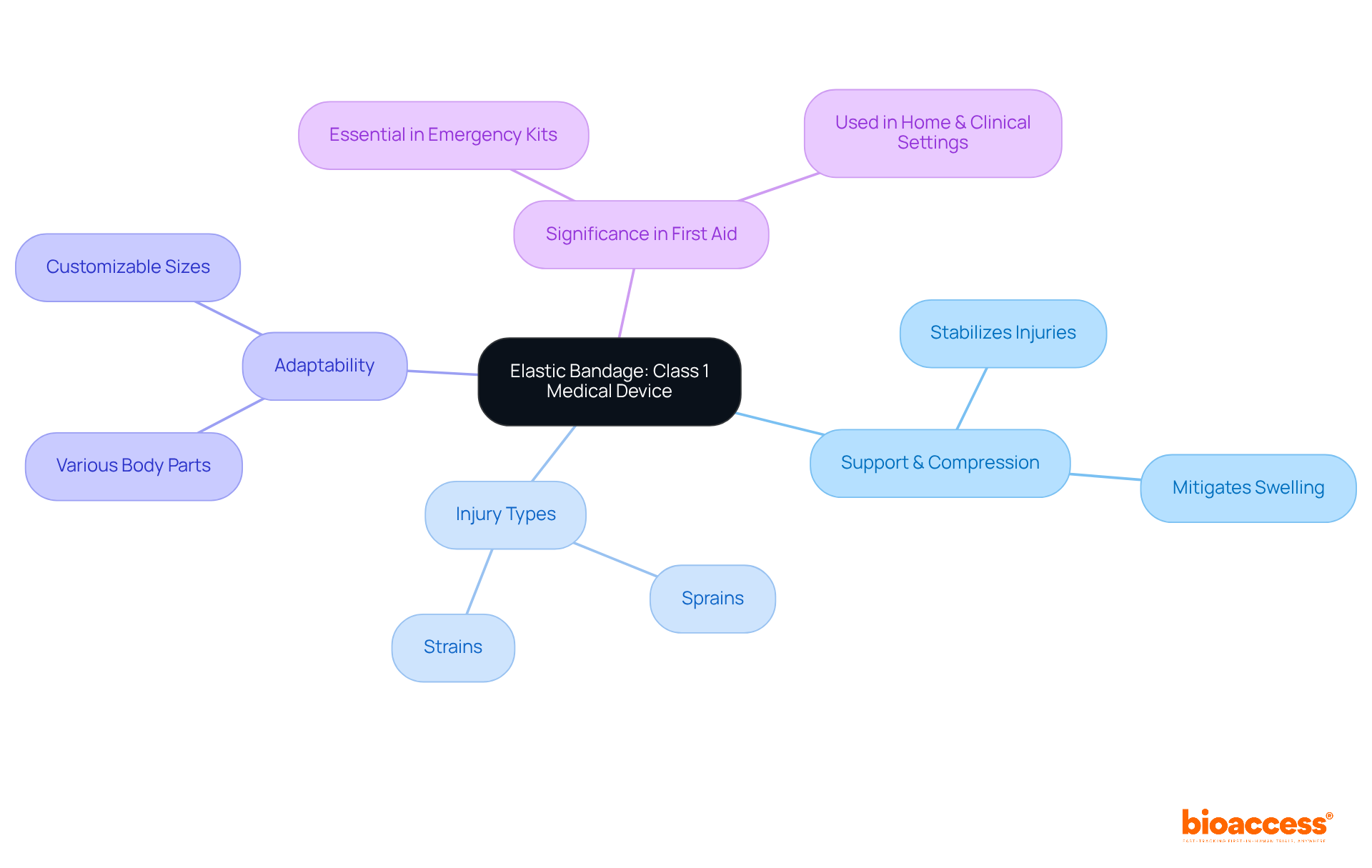
Surgical gloves are an important class 1 medical device example that serves as a protective barrier between medical professionals and patients, significantly reducing the risk of infection during medical procedures. Constructed from materials such as latex, nitrile, or vinyl, these gloves are engineered for durability and a secure fit, ensuring optimal performance in both surgical and non-surgical environments. Their importance in maintaining hygiene and safety cannot be overstated; they play a crucial role in infection control protocols.
For instance, studies indicate that consistent glove use, combined with proper hand hygiene, can dramatically reduce healthcare-associated infections (HAIs). According to the CDC, one of the most common factors in noncompliance with hand hygiene protocols is the false sense of security provided by gloves, underscoring the need for proper glove use alongside hand hygiene. In fact, hospitals that implement stringent glove protocols report lower infection rates, with some studies showing a significant decrease in HAIs.
As the demand for surgical gloves continues to rise—driven by an increase in surgical procedures and heightened awareness of infection control—the global surgical gloves market is projected to grow at a CAGR of 7.40% from 2025 to 2034, emphasizing their indispensable role in healthcare settings.

Wheelchairs are a prime class 1 medical device example, delivering crucial mobility solutions for individuals facing disabilities or mobility limitations. These devices are available in various forms, including manual and powered options, each crafted to enhance user independence and accessibility. The global market for mobility aids is projected to reach USD 10.76 billion by 2032, expanding at a compound annual growth rate (CAGR) of 9.8% from 2025 to 2032. This growth signifies a rising demand driven by an aging population and an increasing prevalence of mobility disorders.
The functionality of mobility devices profoundly influences the quality of life for users. Rehabilitation specialists assert that well-designed mobility aids can alleviate physical strain and enhance overall mobility. A notable study highlighted that improving mobility skills through targeted training can lead to increased confidence and greater participation in social activities.
Real-world examples underscore the importance of mobility devices within rehabilitation contexts. For instance, a case study revealed that the integration of advanced mobility devices significantly improved the movement of patients recovering from spinal cord injuries, enabling them to engage more fully in their rehabilitation programs.
Moreover, it is crucial to note that four-fifths of individuals using mobility aids encounter challenges with local public transportation systems. This statistic underscores the vital role of mobility aids in enhancing independence and accessibility. Additionally, the World Health Organization estimates that approximately 80 million individuals worldwide require mobility aids, highlighting the global necessity for such equipment.
In summary, the diverse array of mobility devices available today caters to a wide spectrum of needs, ensuring that individuals can discover solutions tailored to their unique mobility challenges. As the market continues to evolve, innovations in the design and functionality of mobility aids will be instrumental in improving the lives of those who rely on these indispensable tools.
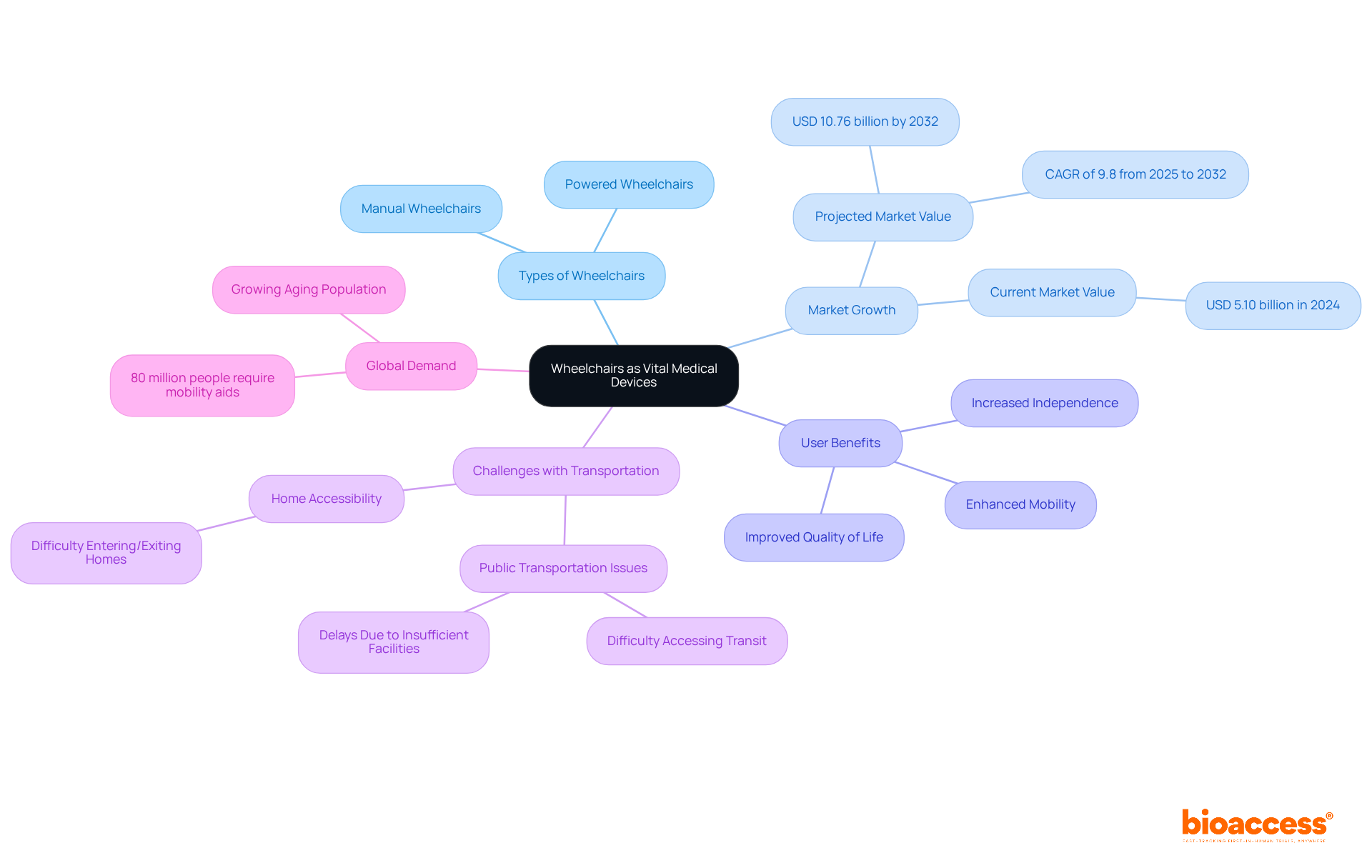
Non-powered mobility aids serve as a key class 1 medical device example, specifically designed for individuals who need assistance with movement without relying on powered options. These mobility aids are generally lightweight, easy to maneuver, and adaptable to various environments, making them an ideal choice for many users. Their simplicity and effectiveness underscore their importance in everyday mobility solutions.
In healthcare environments, manual mobility aids are often employed for individuals with temporary mobility challenges, such as those recuperating from surgery or injury. For instance, hospitals often depend on a class 1 medical device example, such as manual mobility aids, to facilitate patient transport, ensuring that individuals can navigate their surroundings safely and comfortably.
Market analysis shows that the demand for non-powered mobility aids continues to increase, driven by their affordability and ease of use. In 2025, the manual mobility aid segment is projected to hold a significant share of the global market, reflecting a preference for these devices among users who prioritize cost-effective transportation solutions. Significantly, the manual mobility device segment represented the largest market share of 51.3% in 2024, emphasizing its dominance in the industry.
Occupational therapists emphasize the effectiveness of non-powered mobility aids, which are a class 1 medical device example, in enhancing user independence and quality of life. They frequently highlight that these tools not only offer vital mobility assistance but also promote physical activity and participation in daily tasks, which are essential for overall well-being. Additionally, the United Nations indicates that 16% of individuals over 60 will require assistance with mobility aids such as rolling chairs, underscoring the increasing need for non-powered alternatives among senior citizens. As the healthcare landscape evolves, the role of non-powered wheelchairs remains pivotal in addressing the mobility needs of diverse populations.

Bed rails are a significant class 1 medical device example in both hospital and home care settings, crucial for preventing individuals from falling out of bed. These devices establish a physical barrier that significantly enhances safety, particularly for elderly or disabled individuals who face a heightened risk of injury. Their implementation represents a straightforward yet effective strategy to bolster safety and comfort during recovery.
In healthcare settings, bed rails serve as a class 1 medical device example, widely acknowledged for their critical role in fall prevention. Statistics indicate that falls rank among the most common safety incidents for patients, with a considerable percentage occurring from bed height. By providing support and stability, bed rails mitigate these risks, enabling individuals to adjust their positions safely.
Nursing professionals stress the importance of appropriate bed rail usage. For instance, Oliver Anderson from Imperial College London notes that while bed rails are the most frequently employed measure to prevent falls, their effectiveness can vary based on individual needs and circumstances. Regular evaluations are crucial to ensure that bed rails are used efficiently and securely, particularly for individuals who may be disoriented or physically weak.
In home care settings, the advantages of bed rails extend to caregivers as well. They provide reassurance, knowing that their loved ones are less likely to suffer falls during the night. However, it is vital to confirm that bed rails are compatible with the bed and mattress to avoid entrapment risks.
In summary, the strategic deployment of bed rails not only enhances safety for individuals but also contributes to a more comfortable recovery experience, establishing them as a vital component of care.
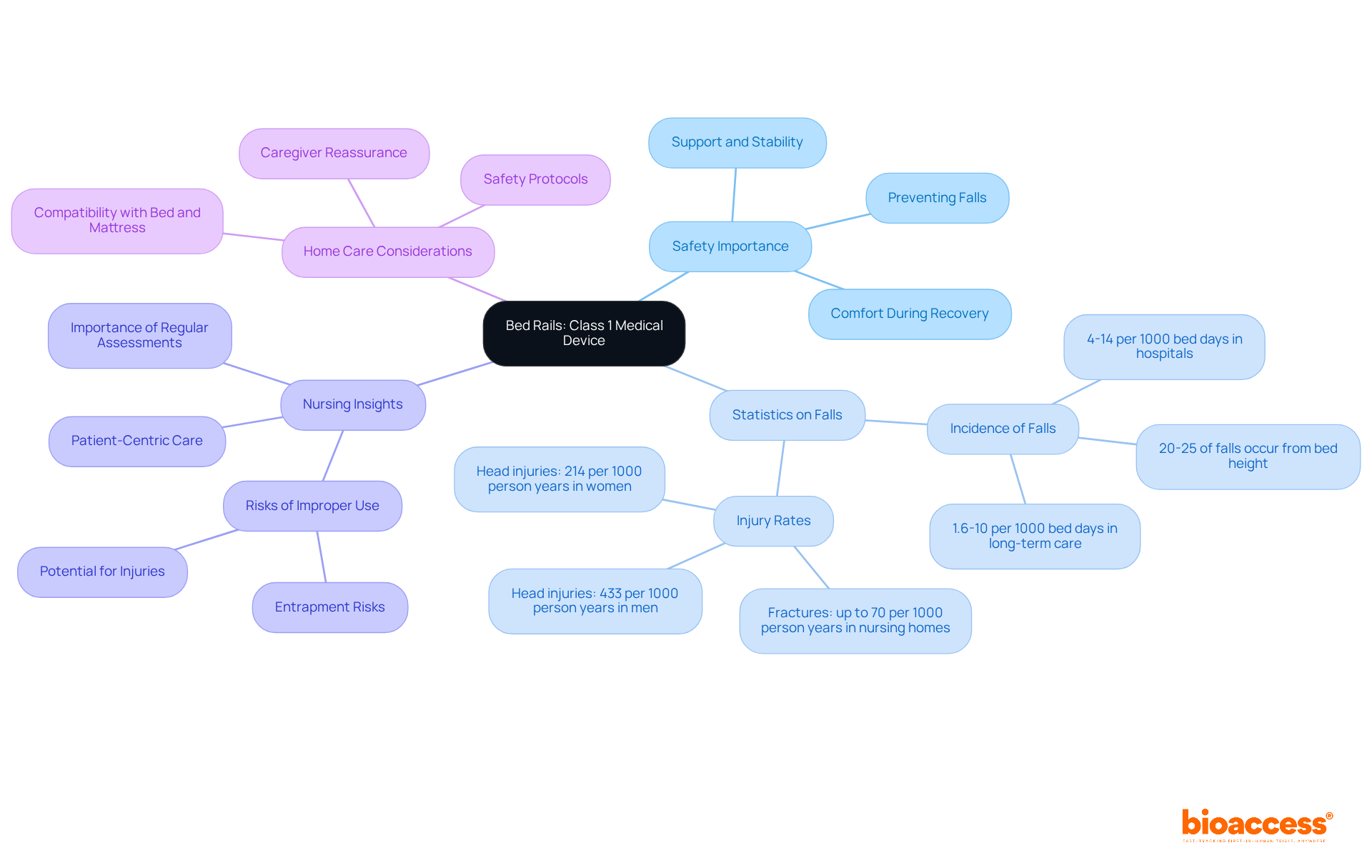
Manual resuscitators, commonly known as bag-valve masks, are indispensable as a class 1 medical device example employed in emergencies to provide ventilation to patients who are not breathing. These devices are composed of:
This enables healthcare providers to deliver positive pressure ventilation effectively. Their critical role in emergency care underscores their necessity, establishing them as a vital component of medical response equipment.
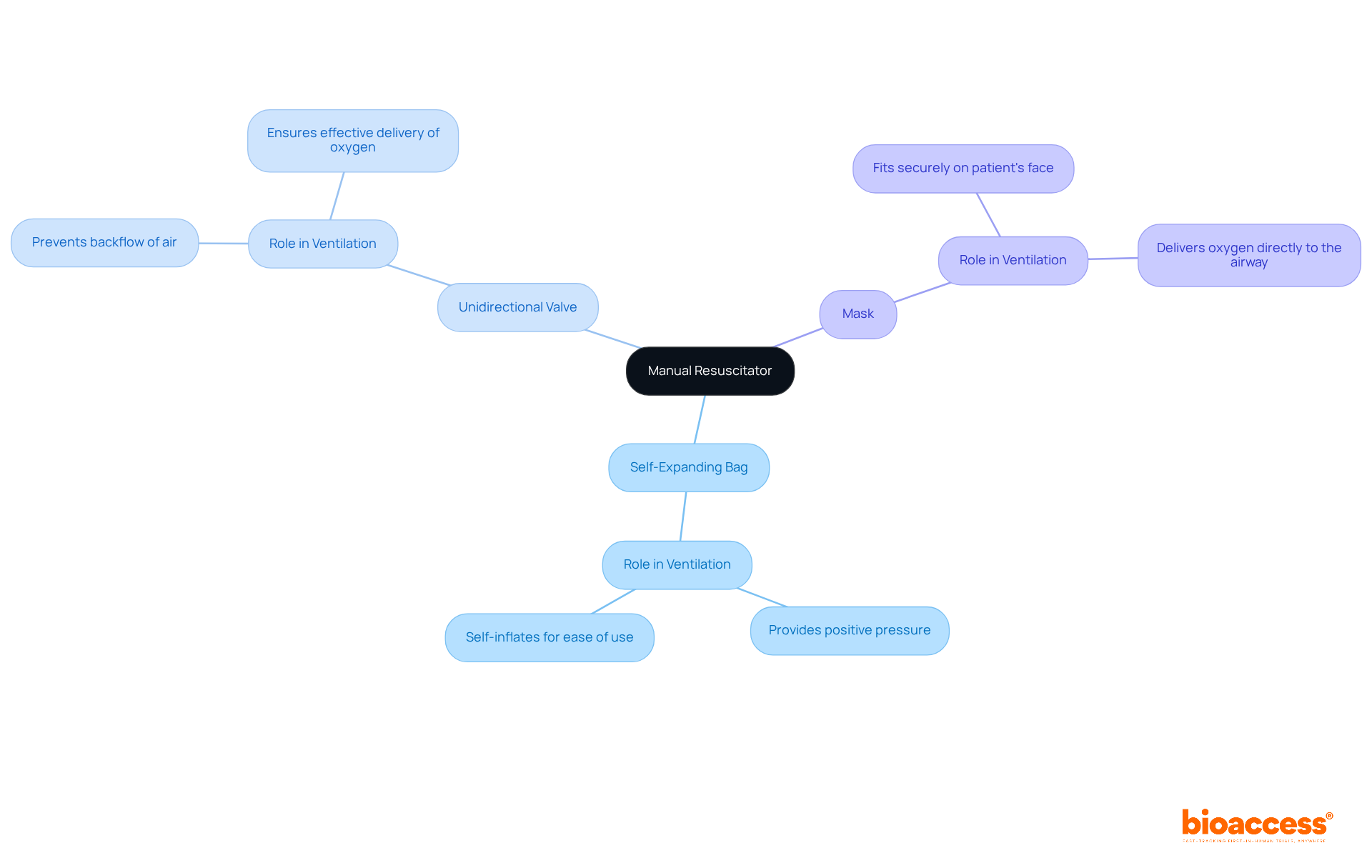
The exploration of Class 1 medical devices reveals their fundamental role in healthcare, underscoring their simplicity and effectiveness across diverse settings. These devices, ranging from adhesive bandages to manual resuscitators, embody the essence of medical innovation that prioritizes patient safety and care. Their widespread use not only highlights their significance in everyday medical practice but also emphasizes the necessity for ongoing advancements to meet the evolving demands of healthcare.
Throughout this article, several key examples of Class 1 medical devices have been discussed, showcasing their diverse applications and market potential.
Each device contributes uniquely to patient care, demonstrating the essential nature of these tools for both healthcare professionals and individuals managing their health at home. The growth trends in the markets for these devices further illustrate their increasing significance in the healthcare landscape.
In light of these insights, it is crucial for stakeholders in the medical field to recognize the value of Class 1 medical devices and to invest in their development and innovation. As the healthcare environment continues to evolve, ensuring access to effective and reliable medical devices will be vital for improving health outcomes and enhancing the quality of care. Embracing advancements in technology and understanding the importance of these devices can lead to better preparedness in addressing both current and future healthcare challenges.
What is bioaccess® and what role does it play in medical device development in Latin America?
bioaccess® accelerates the development of Class 1 medical devices in Latin America by leveraging the region's regulatory flexibility, securing ethical approvals in 4-6 weeks, and facilitating enrollment processes that are 50% faster than traditional markets.
How many regulatory submissions has bioaccess® successfully finalized?
bioaccess® has successfully finalized over 159 regulatory submissions for more than 75 medical equipment trials.
What are the advantages of working with bioaccess® for Medtech, Biopharma, and Radiopharma innovators?
Collaborating with bioaccess® provides a significant competitive advantage by accelerating market entry and allowing clients to leverage diverse patient pools in Latin America, enhancing their potential for success.
What is the projected growth rate of the Latin American market for medical devices?
The Latin American market is projected to grow at a compound annual growth rate (CAGR) of 13.93% from 2025 to 2033.
What is an example of a Class 1 medical device mentioned in the article?
An example of a Class 1 medical device is an adhesive bandage, which is essential for protecting minor cuts and abrasions.
What is the projected market value of adhesive bandages by 2034?
The global adhesive bandages market is expected to grow from approximately USD 8.35 billion by 2025 to USD 11.38 billion by 2034.
How do adhesive bandages contribute to wound care?
Adhesive bandages provide a barrier against dirt and bacteria, facilitate the healing process, and are effective in reducing infection risks, especially post-surgery.
What advancements have been made in digital thermometer technology?
Recent advancements in digital thermometers include features such as memory recall, fever alerts, and the ability to resolve temperature differences as small as 0.1°C.
What is the projected market growth for digital thermometers from 2024 to 2030?
The global digital thermometer market was assessed at USD 1.06 billion in 2024 and is projected to reach USD 1.59 billion by 2030.
Why are digital thermometers important in healthcare?
Digital thermometers are crucial for rapid and precise body temperature measurements, which are essential for diagnosing infections and monitoring patient care.